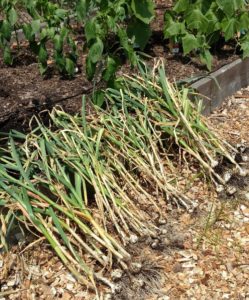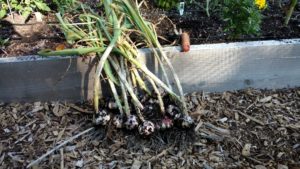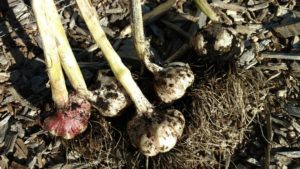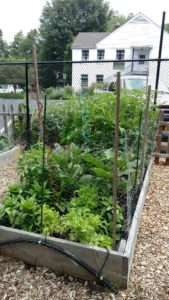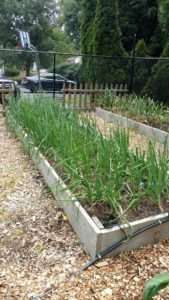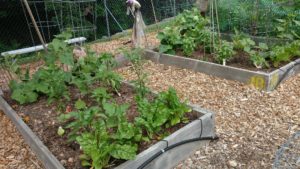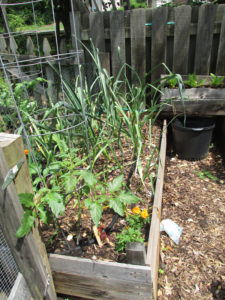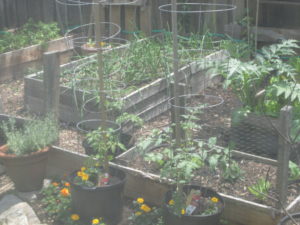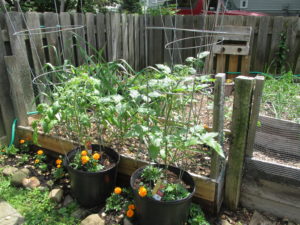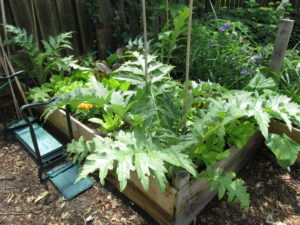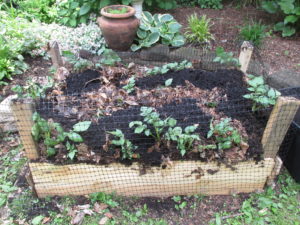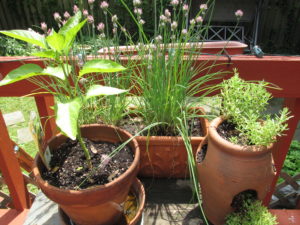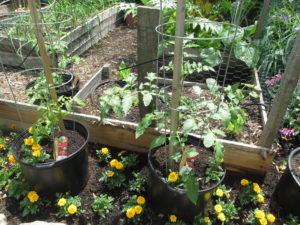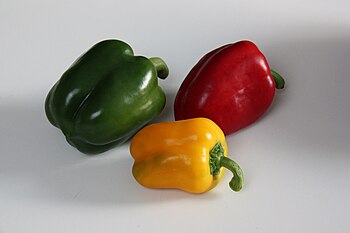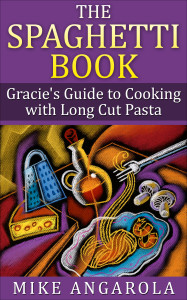The 4th of July means a lot of things to a lot of people, but for me it serves as a reminder that a garlic harvest is upon us.
Being raised in an Italian America family that loved to garden I tend to plant a lot of vegetables that are familiar with an Italian or Mediterranean diet. One that I plant every year is garlic. I put it in the ground around Columbus Day (big day for Italians) and dig it out around the 4th of July (big day for Americans).
This year the weather turned real hot and garlic doesn’t like the heat. Once more than half the leaves start to turn and dry out, it’s time to dig the garlic up. I really felt it needed more time to get bigger bulbs, but if you ignore the signs that it’s ready you run the risk of it splitting. A few posts back I talked about cutting the Scapes (pictured below) in hopes of getting bigger bulbs. Now was the time to see how things worked out.
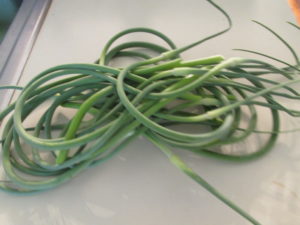
Just a few of the Garlic Scapes harvested about 3 weeks ago.
So, below are a few shots from my 2017 batch and some from this year. 2018 was a weird year for garlic. We had an early, bitter cold winter followed by a mild February that turned into a three month period when it felt like winter would never end. June was nice but dry and along comes the 4th and we’re hitting almost 100 degrees with high humidity every day. Not a good run for garlic.
So the bulbs were for the most part small but with almost zero splitting, whereas last year I played roulette with the weather and kept them in the ground to long. I ended up with a few splinters. All in all, I should have plenty of garlic to last a good 4 or 5 months and well being Italian, I’ll come up with plenty of uses.
Check out Gracie’s Garlic Rigatoni with Zucchini. Zucchini, another vegetable that grows in my Mediterranean garden. This recipe really gets its kick from a generous amount of garlic. Find this recipe and many more in our Mediterranean Diet Recipe Book.
Ingredients:
1 lb. Rigatoni
1/2 Tbsp. butter
1/2 cup olive oil
4 cloves of chopped garlic
2-3 shallots finely chopped
2 mid size zucchini sliced in half moons
salt and pepper to taste
1 cup chopped Italian parsley
Add rigatoni to boiling salted water and cook till al Dente.
In a frying pan melt the butter and add the olive oil, reserving a bit for later. Sauté the garlic, and shallots about 2 minutes and then add the sliced zucchini, salt and pepper. Continue to cook gently about 5 minutes, stirring lightly.
When the rigatoni is ready, drain and put back into the pot. Add your remaining olive oil to keep it from sticking. Pour the zucchini mixture over the pasta and toss gently while continuing to cook for 2 to 3 minutes.
Place on a platter, sprinkle chopped parsley with some grated Parmesan cheese over the top.

